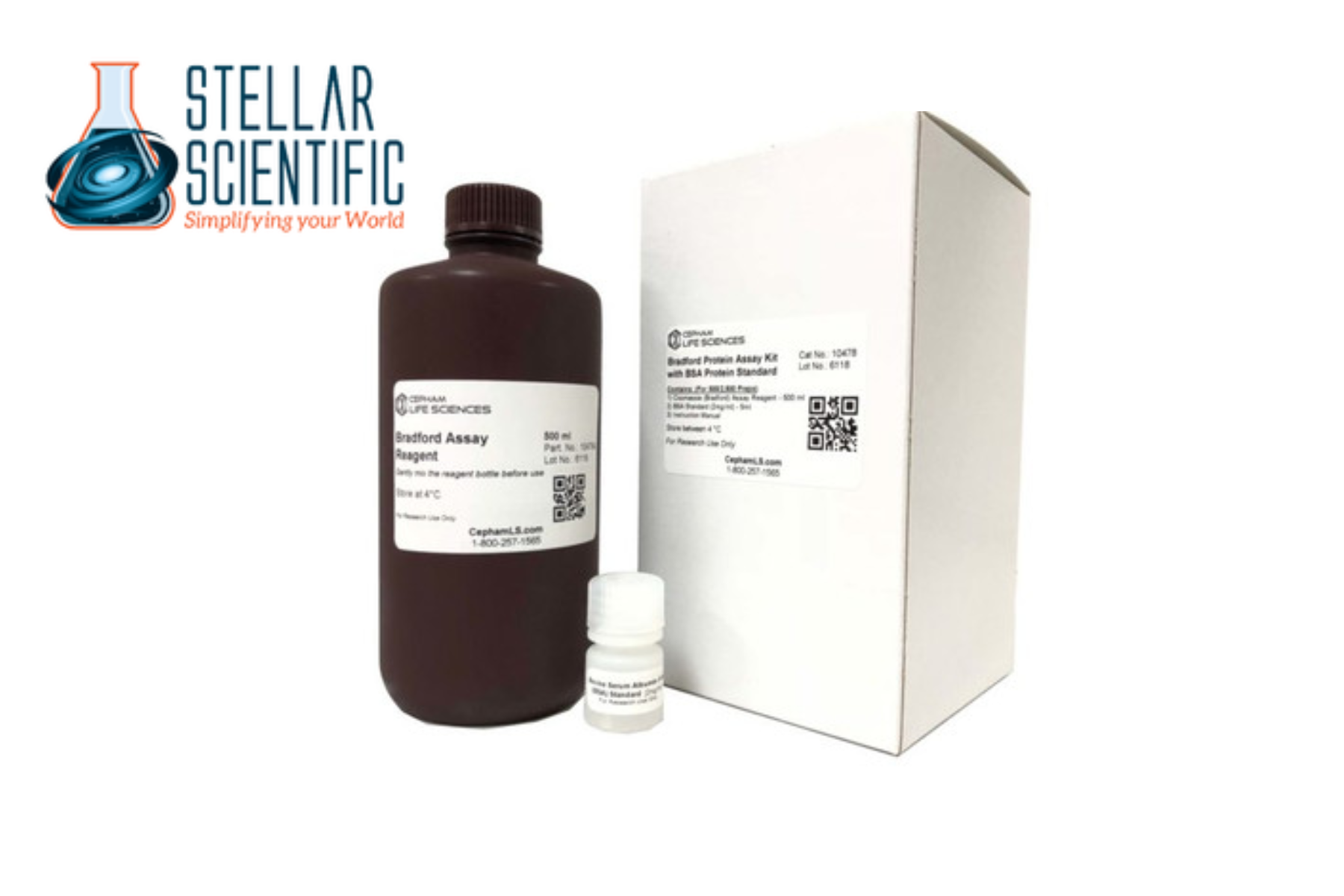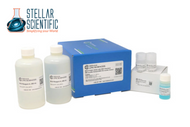Bradford Assay You Can Count On Every Time
9th May 2025
Accurate protein quantification is a cornerstone of biochemical and molecular biology research. Whether you're preparing samples for electrophoresis, analyzing protein expression, or standardizing enzyme activity, consistent protein measurement is critical. The Bradford assay is one of the most widely used methods for this purpose and for good reason. It's fast, sensitive, and relatively resistant to common laboratory interferences.
However, not all Bradford assays perform equally. The reliability of your results depends heavily on the quality of the reagents, consistency in protocol, and the precision of your tools. For researchers and lab technicians who can't afford variability, a Bradford assay kit you can count on every time is not just a convenience, it's a necessity.

What Is the Bradford Assay?
The Bradford assay is a colorimetric protein quantification method first described by Marion M. Bradford in 1976. It relies on the binding of Coomassie Brilliant Blue G-250 dye to proteins, primarily through interactions with arginine residues, aromatic amino acids, and hydrophobic regions.
How It Works
In an acidic environment, the Coomassie dye exists in a red form. Upon binding to protein, the dye shifts to a blue form with a maximum absorbance at 595 nm. The intensity of the blue color is directly proportional to the protein concentration in the sample, which is measured spectrophotometrically.
Key Benefits
- Speed: The assay can be completed in under 10 minutes.
- Sensitivity: Detects protein concentrations as low as 1 µg/mL.
- Convenience: Minimal sample preparation and compatible with most spectrophotometers and plate readers.
Why Reliability Matters in Protein Quantification
Inconsistent results from protein assays can derail experiments, lead to incorrect interpretations, and waste valuable samples and time. Laboratories need a Bradford assay that delivers:
- Consistent dye performance across batches
- Stable reagents with long shelf life
- High reproducibility in absorbance readings
- Minimal background interference
Using subpar reagents or improperly optimized kits can result in nonlinear standard curves, low sensitivity, and increased error margins. This is especially critical when dealing with low-volume or high-value samples where re-running the assay may not be an option.
Factors That Affect Bradford Assay Accuracy
Understanding what can influence your assay helps prevent mistakes and ensures reliable readings.
Reagent Quality
The purity and preparation of the Coomassie dye reagent play a significant role. Poorly mixed or degraded reagents may lead to erratic readings or reduced sensitivity. Quality-controlled, pre-formulated reagents from trusted suppliers eliminate this variability.
Protein Standards
Bovine Serum Albumin (BSA) is commonly used as the protein standard, but it’s important to remember that different proteins bind the dye differently. The choice of standard should match the protein characteristics in your sample as closely as possible.
Interfering Substances
While the Bradford assay is less susceptible to interference than other methods like the Lowry or BCA assays, it can still be affected by:
- Detergents (e.g., SDS)
- Strong acids or bases
- High concentrations of buffers like Tris or glycine
- Reducing agents such as DTT or β-mercaptoethanol
High-quality Bradford assay kit include detailed compatibility information and tips for avoiding interference, such as diluting samples or using compatible lysis buffers.
Tips for Maximizing Reproducibility
Even with a dependable assay kit, best practices ensure that your results remain consistent and reproducible across experiments.
Use Fresh Reagents or Store Properly
Follow storage recommendations for assay components. Store dye reagents in dark bottles at appropriate temperatures, and avoid repeated freeze-thaw cycles.
Calibrate Instruments Regularly
Your spectrophotometer or microplate reader should be regularly calibrated to avoid skewed absorbance readings, especially when working in the lower end of the assay's sensitivity range.
Perform Technical Replicates
Running samples in duplicate or triplicate helps identify outliers and provides a more reliable average measurement.
Standard Curve Every Time
Always generate a new standard curve with each assay run. Even with high-quality kits, day-to-day environmental variations can affect results.
Mix Thoroughly and Time Consistently
Ensure thorough mixing of dye and sample, and maintain consistent incubation times across all wells to reduce variability.
When to Choose the Bradford Assay Over Other Methods
The lab Bradford assay stands out for its simplicity and speed, but it’s not the best choice for every scenario. It is ideal when:
- You need a quick turnaround time
- Samples are relatively free from interfering agents
- You’re working with a large number of samples in a high-throughput format
- Budget constraints limit the use of more expensive assays
For samples rich in detergents or those requiring extremely high sensitivity, alternative assays like BCA or Lowry may be more appropriate. However, for routine lab work, the Bradford assay remains a reliable and cost-effective option.
Reliable Bradford Assay Kits from Stellar Scientific
At Stellar Scientific, we understand the critical nature of protein quantification in daily laboratory workflows. That’s why we offer Bradford assay kits and reagents that are:
- Rigorously tested for batch-to-batch consistency
- Stable under recommended storage conditions
- Supplied with clear protocols and compatibility guidelines
- Priced to support labs of all sizes, from academic research to industrial applications
Our assay kits are designed to perform consistently, helping researchers avoid frustrating variability and focus on what matters: getting accurate, reproducible data.
About Stellar Scientific
Stellar Scientific is a trusted source for laboratory equipment, consumables, and reagents tailored to the needs of research professionals. Our catalog includes high-quality products such as assay kits, pipettes, cuvettes, lab glassware, and protective gear, all sourced from reputable manufacturers and tested for reliability and performance.
We are committed to supporting scientific advancement by providing laboratories with the tools they need to achieve consistent, accurate results. Whether you work in molecular biology, biochemistry, clinical diagnostics, or environmental research, Stellar Scientific is here to help your lab perform at its best.

